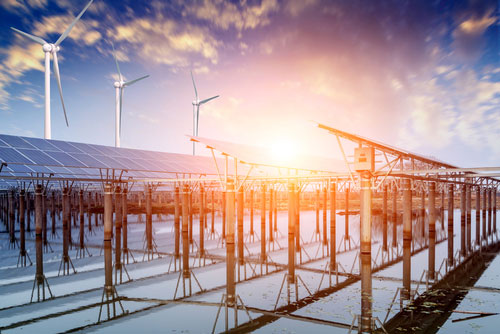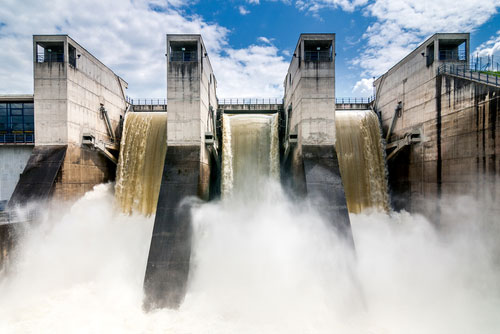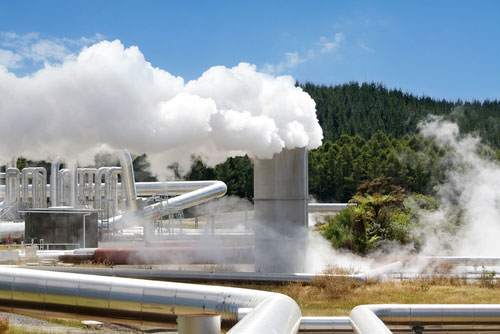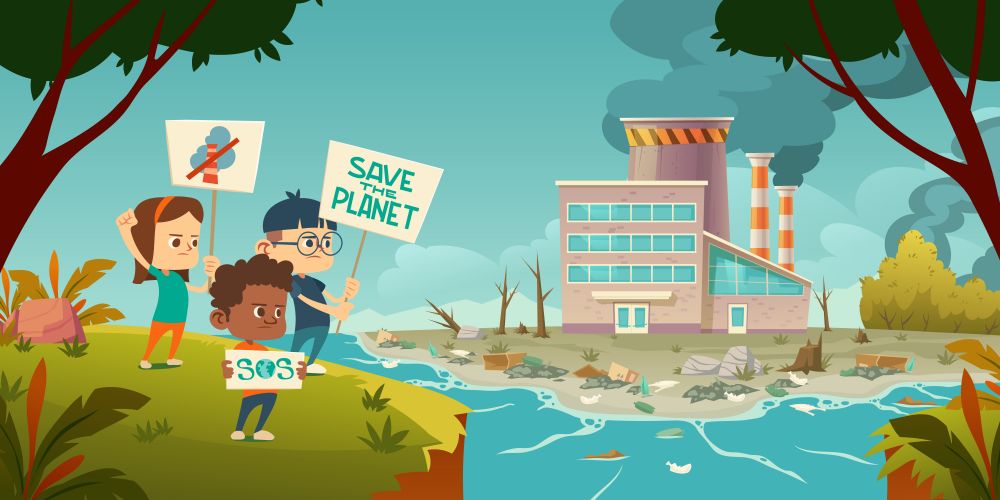Hãy nhập câu hỏi của bạn vào đây, nếu là tài khoản VIP, bạn sẽ được ưu tiên trả lời.

Industries and businesses are the most concern in many cities as they make the city more congested and pollute the environment in one hand, while creating job opportunities and contribute to the development of the city on the other hand. Many of the enterprises are operated and promoted in bigger cities only. Encouraging them to move to regional areas is a good idea. I have more benefits than drawbacks.
There are several advantages to the industry and should take initiatives to so. The most important aspect is the development of the regional areas. Setting up of enterprises in rural areas will help to develop basic infrastructures transportation, electricity and road in rural areas. In addition, the people of this area will have the golden opportunity of employment and that would enhance the living standard as well. Moreover, the economic activity of the area will increase and that will let the government take further initiatives in order to develop this urban area. The different types of small businesses and industries hotel, lodge, suppliers will emerge and that will support other businesses and add value to the economy of these areas.
Regional offices are often helpful to expand businesses and to reduce the manufacturing and operating costs. Có nhiều công nghiệp lớn nhất sẽ được thực hiện từ này. Again the pressure on the big cities would reduce and that would lessen many serious issues pollutions, traffic jam and waste management.
Despite this, there are several disadvantages of moving businesses and industries to regional areas. One of the most prominent drawbacks is the exploitation of natural resources. The industry will use forest resources, which will cause environmental degradation pollution, climate change and much more. The gradual increase in the population size in such urban areas will increase the crime rate. Finally relocating an industry to a different place involves a great amount of costs and the industry would not want to spend this amount naturally.
All in all, comparing the good look and the bad, I think that the government must encourage the industries and businesses to move to the regional areas where they would operate in better fashion for the overall betterment of economy and environment and population.

Tourism is a unique human activity, experienced by millions of people worldwide every year. As people differ in their attitude towards almost everything in life, the same applies also to tourism; where some treat tourism globally as the focus of their act without scrutinising the other related activities pertaining to it. Hence, the term 'responsible tourism" emerged; in order to pay a sufficient attention of the tourist to the local cultural values of the destination country, and – more globally – to the environment. From my point of view, tourism must be labelled as a "responsible activity"; even if it is mandatory to issue as many local and international legislations to make it so.
While making tourism, should the tourist carry his culture with him to the foreign country? Obviously, the answer is "No". If the tourist insists on doing this, he will sure subject himself to great dangers especially in communities with intolerant local citizens. One of the best examples of this is the "Thump Up" sign which is greatly practised in many countries; where this sign is USA means "OK or very good"; while it is considered as very crude and impolite in Greece (which is a famous touristic destination). Thus, it is crucial to teach the tourists a list of common practices that they must refrain from doing, explaining the reasons behind this.
When it comes to the environment, it is indeed very unfortunate to find that the touristic areas are those with the greatest pollution and litter output! A few years ago, it was really surprising that an international campaign of volunteers aimed to clean the Himalayas from the trash left by the climbers.
In conclusion, tourism should be dealt with in the same way as freedom; that it must be "responsible", respecting both the local cultural and environmental values of each society.
Bạn có thể tham khảo bài này ở trang IELTS Mentor nha!

Ngày nay, nhiều người kết hôn với một người khác văn hoá hơn bao giờ hết. Tại sao chuyện này đang xảy ra? Thảo luận cả lợi ích lẫn xu hướng của xu hướng này. Cho biết lý do cho câu trả lời của bạn và bao gồm bất kỳ ví dụ nào có liên quan từ kiến thức hoặc kinh nghiệm của chính bạn.

owadays, water pollution is a very important case. They are very harmful to the ecosystem such as: mass death of fish, withered green plants, etc. Therefore, we should have a good sense of protecting clean water sources. such as: do not throw garbage into rivers or lakes; Do not dump the wastewater from the factory into ponds, lakes, ... I am writing this article to hope everyone can protect the water environment.
Almost all types of water pollution are harmful to the health of humans, animals and plants. Water pollution may not harm our health immediately but could harm after long term exposure. Different types of water pollution affect health in different ways:
Heavy metals from industrial processes can accumulate in nearby lakes and rivers. They are toxic to marine organisms such as fish and shellfish, and subsequently to those who eat them. Heavy metals can slow growth; birth defects and cancer.
Industrial waste often contains many toxic compounds that are harmful to the health of seafood. Some of the toxins in industrial waste can have only mild effects while others can be fatal. They can cause immunosuppression, fertility failure or acute poisoning.
Pollutants from wastewater often lead to diseases that infect aquatic and terrestrial organisms through drinking water. Microbiological contamination is a major problem in developing countries, with diseases such as cholera and typhoid fever being the main cause of infant mortality.
Sulfate particles from acid rain can harm the health of organisms in rivers and lakes, which can lead to death.
The suspended particles in fresh water reduce the quality of drinking water for humans and the aquatic environment for marine organisms. Suspended particles can often reduce the amount of sunlight that passes through the water, disrupting the growth of photosynthetic plants and microorganisms. As a way to reduce water pollution, more advanced technical cleaning is needed. Some developed countries have wastewater treatment plants that remove pathogens. Maintenance, replacement and repair of leaky and faulty wastewater treatment infrastructure. Household septic tanks need to ensure pre-treatment on the spot before seeping into the soil.

Renewable energies (or renewables) are ways to generate energy from (theoreally) unlimited natural resources. These resources are either available with no time limit or replenish more quickly than the rate at which they are consumed.
Renewable energies are generally spoken of as opposed to fossil fuel energies. The fossil fuels’ stocks are limited and non-renewable in the human timescale. The most known examples of these resources are coal, oil or natural gas. On the contrary, renewable energies are produced from renewable sources. Here, we’re talking about energy coming from solar rays, wind or water cycles – all theoreally unlimited on a human scale time.
Renewable energies are also often referred to as “green energies” or “clean energies”. Still, this doesn’t mean that these energies aren’t harmful to the environment and have zero impact. Nonetheless, they have a low environmental impact compared to fossil fuels. That’s why they’re increasingly becoming important elements in companies’ CSR strategies in terms of sustainable development.
There are several types of renewable energies that are produced by different sources such as the sun, wind or water. In fact, these renewables’ power consumption has been growing over the last year. They have provided 8% of the world’s electricity in 2017 and they now cover 1/3 of the power mix in Europe. At the same time, the energy grid gets 1/4 of the total energy in China and 1/6 in the United States, India, and Japan. Let’s learn more about them below.
- Related content:
- Is Solar Energy Really Green And Sustainable?
1 – Solar Energy

This type of renewable energy comes directly from the capture of solar radiation. Here, the solar radiation is absorbed by specific sensors and rebroadcasted following 2 possible operation modes:
- Capturing sun rays and directly converting them into energy through photovoltaic solar panels;
- Capturing, collecting and turning the sunlight into heat that warms up water or air.
Examples of Solar Energy in the World
It’s estimated that in 2017 1,6% of the worldwide generated energy came from solar sources. At the same time, solar power also contributed to 20% of the total energy growth in this same year. Some of the most known sources of solar energy are:
- The Kurnool Ultra Solar Park in India. It has a total generation capacity of 1000MW and over 4 million solar panels installed;
- The Longyangxia Solar Park in China that has a total capacity of 850MW and covers around 25sq km.
- The Kamuthi Solar Facility in India: it has a total capacity of 648MV and covers 10sq km.
Is Solar Energy Renewable or Nonrenewable?
Solar energy is inexhaustible in the sense that it will cease once the solar system’s star – the sun – dies. However, many people wonder if, from a perspective of human’s being able to capture and use solar energy in the long-term, whether solar energy is renewable or nonrenewable.
[Full answer available soon.]
2 – Windpower, a Renewable Energy
Wind power is another renewable energy. Here, the wind’s kine energy makes turbines spin and creates a mechanical movement. Afterward, a generator transforms this mechanical energy into electricity. There are several types of wind renewable energies: onshore wind turbines, off-shore wind turbines and even floating wind turbines. But the operating principles are basically the same for all these types of wind-generated energy.
Examples of Wind Power in the World
Wind power continues has also been growing, In fact, it provided 4.4% of global power generation in 2017. The highest installed wind capacity belongs to China (164GW). At the same time, in the EU, wind power provides 15% or more of the energy generated in several countries such as Germany, Portugal or Lithuania. Some of the most known sources of wind power energy are:
- The Gansu Wind Farm in China. It is still under construction and it will be able to produce 20,000MV of power by 2020;
- The onshore Muppandal Wind Farm in India with a capacity of 1,500MW and over 3000 turbines;
- The Alta Wind Energy Center in the U.S. with a total capacity of 1,548MW that’s expected to reach 3,000MW by 2040;
- The Walney Extension in the UK. It has a total capacity of 659MW and it’s the world’s largest offshore farm.
3 – Hydro-Electric Power

Hydro-electric power consists in the transformation of the kine energy of the water (from rivers, dams, marine currents or tides) into mechanical energy by turbines.
- Related content:
- Marine energies: what is it?
- 5 promising marine energy projects
- The tidal energy: an example of the tidal turbine DCNS
Examples of hydro-electric power in the world
- The Sihwa Lake Tidal Power Station in South Korea. This is the world’s biggest tidal power installation and it has a capacity of 254 MW;
- The Rance Tidal Power Station in Brittany, France, has a 240 MW capacity;
- The Three Gorges Dam in China is the world’s largest power station in terms of installed capacity (22,500 MW).
4- Biomass

Biomass is made up of organic materials from plants or animals that contain stored energy. The combustion of these natural materials produces renewable energy. Some examples of generating energy from biomass are:
- Directly burning solid biomass garbage or wood to produce heat;
- Converting biomass into biogases such as methane or CO2 due to the bacterial activity that happens in the absence of oxygen (as is the case in landfills);
- Using sugar or corn crops to create biofuels such as bioethanol or biodiesel and mixing them with fossil fuels afterward. As a matter of fact, the world’s biofuels production increased by 3.5% in 2017.
Related content:
- Palm oil has a huge environmental impact. What’s the impact of its use as a biofuel?
- What Is Biogas Energy Production?
Examples of Biomass Energy in the World
Some of the most known biomass power plants in the world are:
- The Iron Bridge power station in the UK, with a capacity of 740MW. It uses wood pellets as the main fuel;
- The Alholmenskaft power station in Finland. It has a 260MW energy generation capacity;
- The Polaniec power plant in Poland that uses mainly agricultural by-products and wood residues. It has a 205MW capacity.
5- Geothermal Power as a Renewable Energy

The Earth generates and stores geothermal energy. In other words, radioactive materials decaying inside the Earth are emitting energy. Electricity can be created using directly or indirectly this energy, depending on the technology implemented. There are 3 main ways to use geothermal energy:
- Generating electricity directly from the Earth’s heat;
- Producing heat directly from hot water boiling on the planet’s surface;
- Using pumps over the shallow ground to heat (and also to cool)

bạn tham khảo nha
I have lived in Ha Noi for many years. Ha Noi is a big and busy city. There are lots of vehicles on the road all day. There are lots of cars, buses, taxis and trucks on high ways. Vietnamese people like moving by motorbike. Almost every family has a motorbike. The traffic jam is often at about 7 a.m and 5 p.m because it’s the time when people go to work or school and come back home. There are sometimes accidents on the road. Therefore, to reduce these problems, we need to obey traffic rules to reduce accidents as much as possible.
Bài dịch
Tôi đã và đang sống ở Hà Nội nhiều năm. Hà Nội là một thành phố lớn và bận rộn. Có nhiều phương tiện trên đường mỗi ngày. Có nhiều ô tô con, xe buýt và xe tải trên đường cao tốc. Người Việt Nam thích di chuyển bằng xe máy. Hấu hết mỗi gia đình đều có một chiếc xe máy. Ùn tắc giao thông thường vào lúc 7 giờ sáng và 5 giờ chiều bởi vì đây là thời điểm mọi người đi làm hoặc đi học và trở về. Có nhiều vụ tai nạn trên đường. Vì vậy để giảm thiểu các vấn đề này, chúng ta cần tuân thủ các luật giao thông để giảm thiểu tai nạn nhiều nhất có thể.
chúc bạn học tốt nha

Read about traffic problems in two cities. Match the city with its problem.
|
A. Ho Chi Minh City |
In Ho Chi Minh City, it is not strange to see the sight of a street that is crowded with vehicles. People cannot move and their health is affected by polluted air from exhausted fumes. What are the reasons? The citizens in the city use many personal vehicles to go from one place to another. They aren't used to transporting by public transports. May be because the bus drivers are careless, impolite to them or the taxi fare is too high for some people.
Bangkok is world renowned for its terrible traffic problems, so getting around on the roads is a bit of a nightmare. In my opinion, there are 3 main causes of Bangkok traffic jams. First, the quality of public transportation is low. Bus is of low quality and causes congestion. Second, the BTS and MRT are not enough for users. Finally, the most important cause of traffic jam is car accidents. Bad bus drivers cause accidents frequently and make the road stuck for hours.
PROBLEMS
1. It has low quality public transport: B. Bangkok.
2. It costs a lot to go by taxi: A. Ho Chi Minh City.
3. There are not enough MRTs for its inhabitants: B. Bangkok.
4. Its citizens use a lot of personal vehicles: A. Ho Chi Minh City.
5. There is a high frequency of accidents: B. Bangkok.
Chúc bạn học tốt!

Sample Answer 1:
Some environmental problems are regional like cyclones and some others are global - greenhouse effects for instance. With the span of time, most of the environmental problems are becoming global issues and I believe that global initiatives should be taken for the best result and to make the world a better place to live in.
To begin with, environmental problems are generally caused by humans and while some of them are national in nature, most of them are global issues. Noise or water pollution at a time remain national problems but after a certain period, it would turn into a problem for the whole world. Thus if some environmental problems are left unaddressed due to its span in a country, it would soon become the problem for all nations.
Moreover, not all nations are equally qualified to address issues of such magnitude, due to their economic and political aspects, and this is why other affluent nations should extend their helping hands to solve such problems. Rich nations contribute more to the global warming and this is why they need to build a common platform to bring all nations together to fight the environmental problems. For a poor country, it is quite tough to allocate budget for saving the greenery while millions of its population are suffering from hunger and natural disaster. This is why other rich nations have natural obligations to help those poor or developing nations.
To draw the conclusion, global environmental problems like greenhouse effects, global warming etc. have already become the concern for every nation. A collaborative effort to address these problems would be a better strategy while each nation is not equally adept to solve the global problems.
Model Answer 2:
Environmental problems greatly vary in terms of their magnitudes and some of these are local, while others are definitely global in nature - the greenhouse effect or global warming for example. For the best result, these short of problems should be addressed at the most appropriate levels, sometimes even at multiple levels.
To begin with, some environmental problems are generally caused by a group of people in a particular region and these issues get accelerated by the rapid expansion of industrialisation in this region. These sorts of problems often include noise pollution, air pollution, deforestation, intoxicating waste disposal etc. and these are generally national in nature. It is better to address these types of environmental problems at the national level and educating people is a viable solution in this scenario. International aid sometimes can help a poor or developing country to address environmental problems but the government of the country should take initiatives to solve such national problems.
Having said that, some environmental problems, for instance, common river, coastline or sea pollution concerns more than one countries and those sorts of problems should be addressed at a bilateral level. Similarly, if an environmental problem concerns a large region, for instance, a continent, that should be discussed and fought by the countries that are located on this continent. Some common examples of this type of environmental problems are desertification, soil erosion, aridness and floods.
Finally, some environmental problems pervade across national boundaries and calls for multinational or global collaboration. For example, radioactive industrial wastages in oceans, ozone layer degradation, global warming are global issues and these types of problems should be addressed by every single nation in the world. For greater success and effectiveness, I believe that the commitment of countries, especially rich nations, is quite important.
To conclude, environmental problems should be viewed as a common problem for the mankind and those global problems should be endorsed and shared globally by all nations. Similarly, rich nationals should help the developing nations to fight their regional and national environmental problems for the best result.
Along with the development of the society, there are an increasing number of issues brought to consideration, one of which is how to approach environmental problems that are threats to people’s quality of life in the modern era. There emerging a standpoint stating the issue should be better addressed on global scale, while others believe it is individual countries’ responsibility. This essay’s aim is providing personal position favoring both viewpoints and appropriate reasons.
On the one hand, solving environmental problems should be first each country’s mission. As each individual country cover a particular part of global natural environment, it is responsible for preserving that part. Suppose citizens on the globe all excellently accomplish their obligation of dealing with environmental problems in the frame of their country, consequently, the issue could be remedied on global scale. Besides, a country itself is believed to best understand its environmental problems. Therefore, it can create appropriate solutions fitting its resources and financial conditions.
On the other hand, good results are also generated when the issue is considered a global duty. International organizations, world forums and pacts provide an ideal circumstance for countries’ leaders to discuss environmental problems. As a proverb goes “Two heads are better than one”, a number of brilliant world leaders may come up with creative remedies for a particularly difficult-to-solve environmental issue of a country. Moreover, in such conferences, wealthier countries have opportunities to provide help for poorer nations that possess little resources to handle their own environmental problems. By mutual assistance among countries, global environmental issues may be handled well.
Briefly, I strongly believe the best result will be produced when environmental problems are addressed both on global scale and by each country. It is both individual and the world’s responsibility to preserve the environment for the next generation.